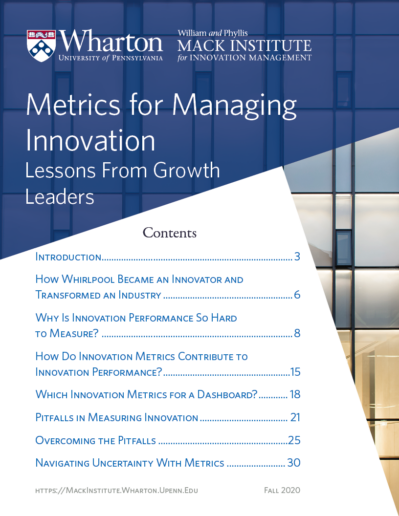 In today’s fast-moving business environment—and with the global pandemic spurring intense change and risk-taking—well-designed innovation dashboards are essential for firms needing to successfully measure and improve the performance of their innovation portfolio.
In today’s fast-moving business environment—and with the global pandemic spurring intense change and risk-taking—well-designed innovation dashboards are essential for firms needing to successfully measure and improve the performance of their innovation portfolio.
This new white paper offers managers guidance, with insights drawn from a best practices survey of 192 companies, for creating a useful dashboard of innovation metrics. The paper tackles the common pitfalls in measuring innovation; choosing the best set of metrics for your firm; navigating uncertainty amid budget constraints; and aligning your chosen metrics with group and individual incentives to motivate superior innovation activity.



